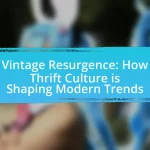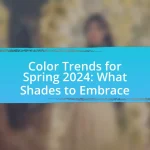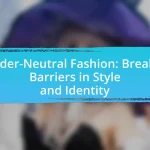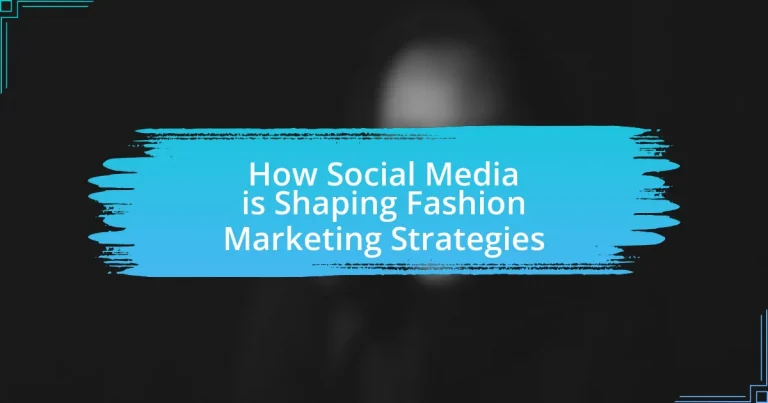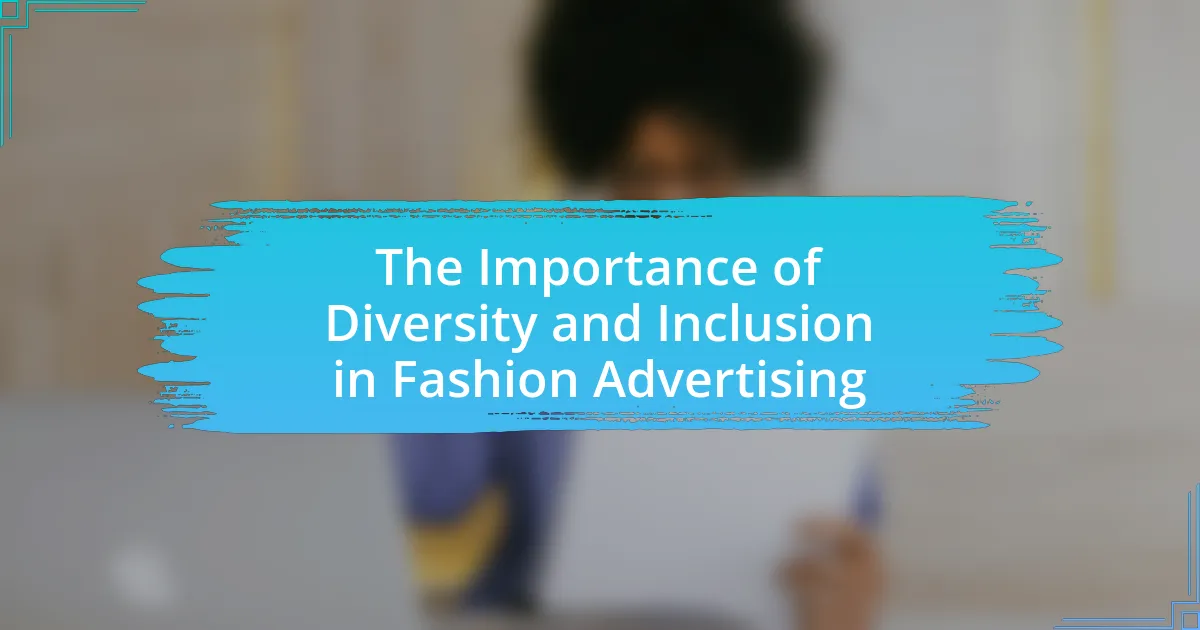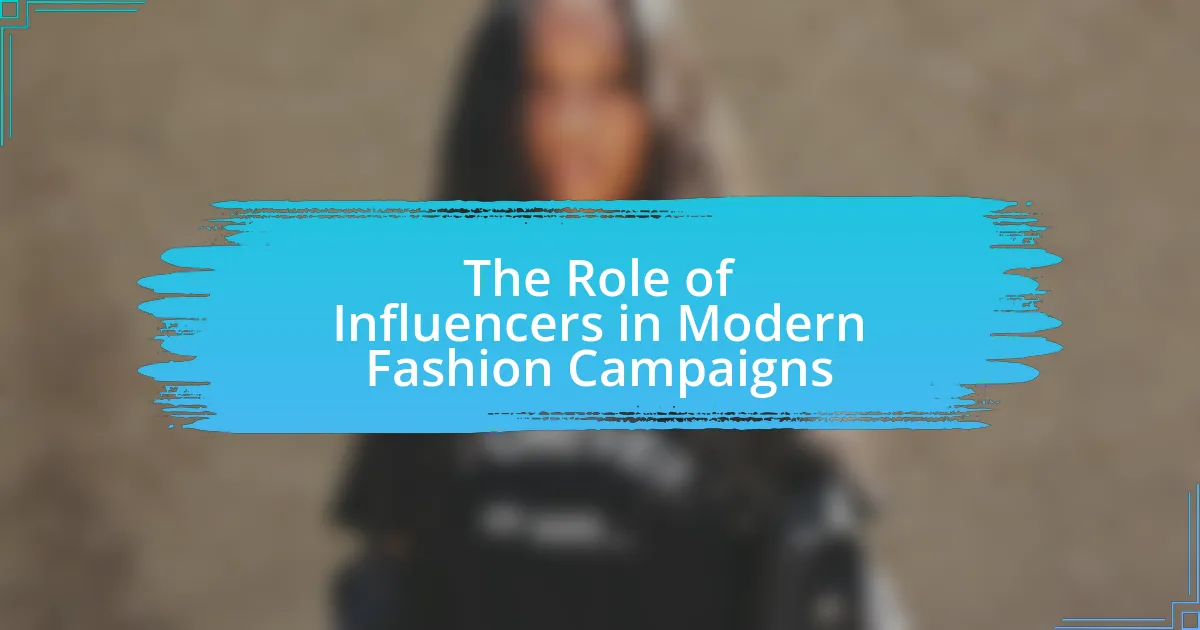Social media is fundamentally transforming fashion marketing strategies by facilitating direct engagement between brands and consumers, enhancing brand loyalty, and driving sales. Key platforms such as Instagram and TikTok are pivotal in showcasing products through visually appealing content, influencing purchasing decisions, and fostering community through user-generated content. The article explores the role of social media in shaping consumer behavior, the impact of influencer partnerships, and the challenges brands face in maintaining authenticity and visibility in a competitive landscape. Additionally, it outlines effective strategies for leveraging social media, measuring success through engagement metrics, and optimizing brand presence across platforms.
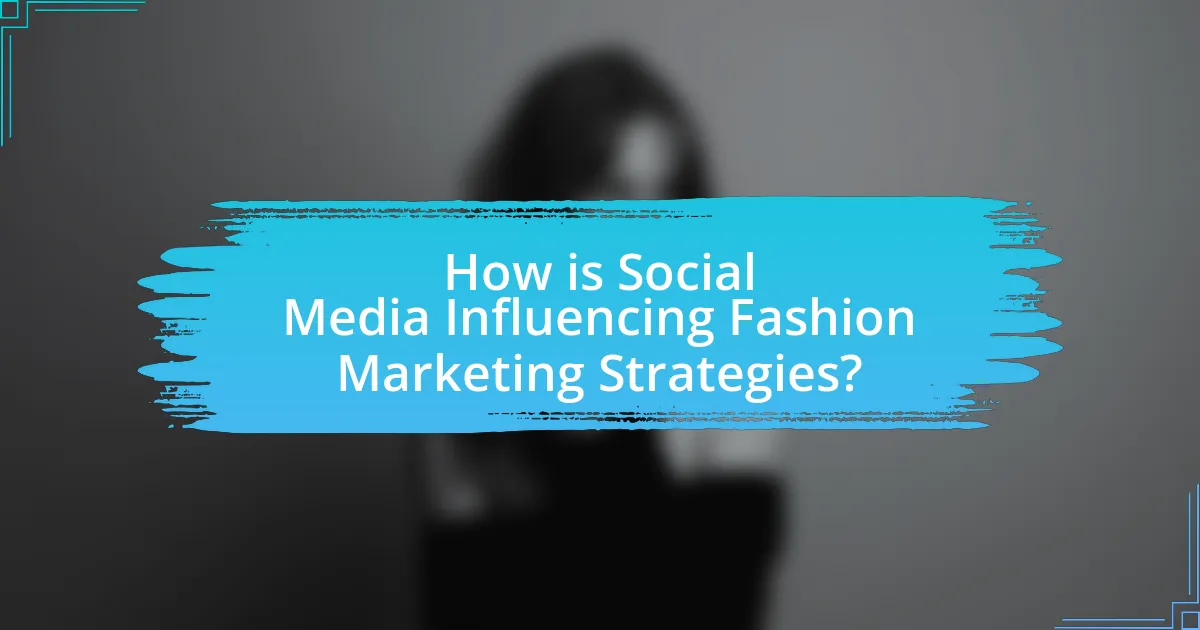
How is Social Media Influencing Fashion Marketing Strategies?
Social media is significantly influencing fashion marketing strategies by enabling brands to engage directly with consumers and leverage user-generated content. This direct engagement allows fashion brands to create personalized marketing campaigns that resonate with their target audience, leading to increased brand loyalty and sales. For instance, a study by McKinsey & Company found that 70% of consumers are influenced by social media when making purchasing decisions, highlighting the platform’s power in shaping consumer behavior. Additionally, platforms like Instagram and TikTok have become essential for fashion brands to showcase their products through visually appealing content, driving trends and facilitating real-time feedback from consumers.
What role does social media play in modern fashion marketing?
Social media plays a crucial role in modern fashion marketing by enabling brands to engage directly with consumers, fostering brand loyalty and driving sales. Platforms like Instagram and TikTok allow fashion brands to showcase their products visually, reaching millions of potential customers instantly. According to a 2021 report by Statista, 54% of social media users utilize these platforms to research products before making a purchase, highlighting the influence of social media on consumer behavior. Additionally, influencer partnerships on social media can amplify brand messages, as influencers often have dedicated followings that trust their recommendations, further validating the effectiveness of social media in shaping fashion marketing strategies.
How has social media changed consumer behavior in fashion?
Social media has significantly transformed consumer behavior in fashion by enabling instant access to trends and fostering direct engagement between brands and consumers. Platforms like Instagram and TikTok allow users to discover new styles through influencers and peer recommendations, leading to a more democratized fashion landscape. According to a 2021 survey by McKinsey, 70% of consumers reported that social media influences their purchasing decisions, highlighting the platform’s role in shaping consumer preferences. Additionally, the immediacy of social media encourages impulse buying, as consumers can purchase items directly through links in posts, further altering traditional shopping patterns.
What are the key social media platforms impacting fashion marketing?
The key social media platforms impacting fashion marketing are Instagram, TikTok, Facebook, and Pinterest. Instagram is particularly influential due to its visual-centric nature, with over 1 billion monthly active users, making it a prime platform for brands to showcase their products through images and influencer partnerships. TikTok has rapidly gained traction, especially among younger demographics, with its short-form video content driving trends and viral challenges that can significantly boost brand visibility. Facebook remains a vital platform for targeted advertising and community engagement, with its extensive user base allowing brands to reach diverse audiences. Pinterest serves as a discovery platform, where users seek inspiration for fashion, leading to high conversion rates for brands that utilize it effectively. These platforms collectively shape fashion marketing strategies by enabling brands to connect with consumers in innovative and engaging ways.
Why is social media essential for fashion brands today?
Social media is essential for fashion brands today because it provides a direct channel for engagement with consumers, enabling brands to build relationships and foster loyalty. This platform allows fashion brands to showcase their products visually, reaching a global audience instantly; for instance, 54% of social media users utilize these platforms to research products before making a purchase. Additionally, social media facilitates real-time feedback and interaction, which can inform product development and marketing strategies. The ability to leverage user-generated content and influencer partnerships further amplifies brand visibility and credibility, making social media a critical component of modern fashion marketing strategies.
How does social media enhance brand visibility in the fashion industry?
Social media enhances brand visibility in the fashion industry by providing platforms for direct engagement with consumers and facilitating widespread content sharing. Fashion brands utilize social media channels like Instagram and TikTok to showcase their collections, engage with influencers, and create visually appealing content that resonates with target audiences. According to a 2021 report by Statista, 54% of consumers use social media to research products, indicating that these platforms significantly influence purchasing decisions. Additionally, brands can leverage user-generated content and hashtags to increase organic reach, further amplifying their visibility.
What advantages do fashion brands gain from social media engagement?
Fashion brands gain increased visibility and customer engagement through social media engagement. This platform allows brands to showcase their products directly to consumers, fostering a sense of community and loyalty. According to a study by Sprout Social, 70% of consumers feel more connected to a brand when they engage with it on social media, highlighting the importance of interaction in building brand loyalty. Additionally, social media provides valuable insights into consumer preferences and trends, enabling brands to tailor their marketing strategies effectively. This data-driven approach enhances targeted advertising, leading to higher conversion rates and sales.
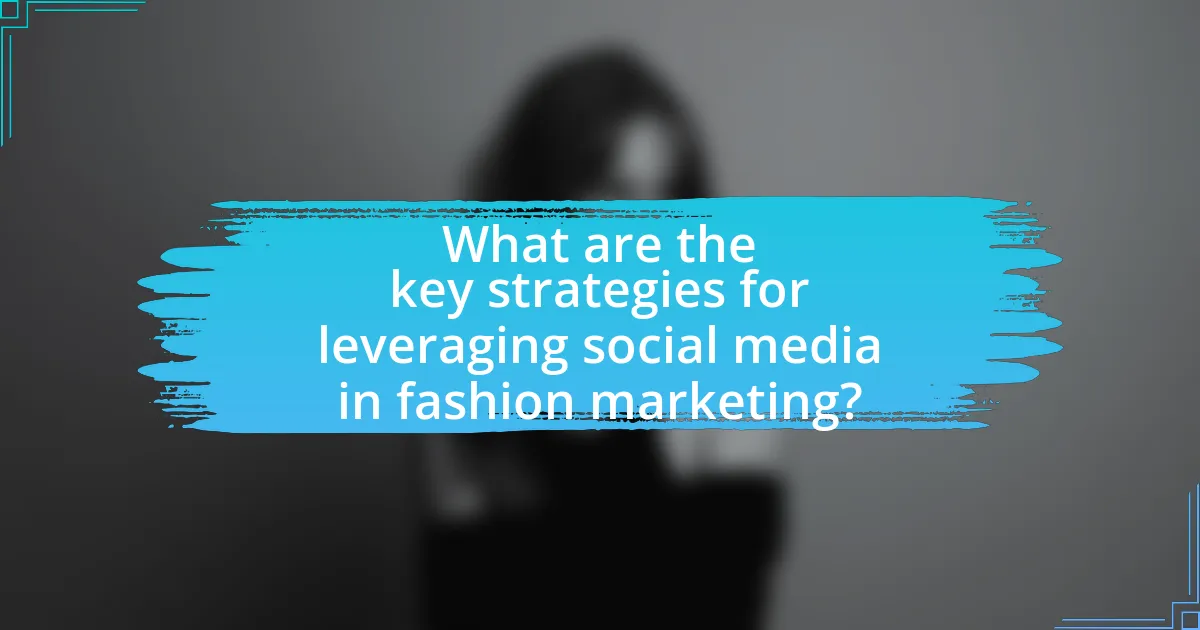
What are the key strategies for leveraging social media in fashion marketing?
Key strategies for leveraging social media in fashion marketing include influencer partnerships, user-generated content, targeted advertising, and real-time engagement. Influencer partnerships allow brands to tap into established audiences, with 49% of consumers relying on influencer recommendations for purchase decisions. User-generated content fosters community and authenticity, as 79% of consumers say user-generated content highly impacts their purchasing decisions. Targeted advertising on platforms like Instagram and Facebook enables brands to reach specific demographics effectively, with 70% of marketers reporting that social media advertising has increased their sales. Real-time engagement through live streams and interactive posts enhances customer connection and brand loyalty, as 67% of consumers feel more connected to brands that engage with them on social media.
How can fashion brands effectively use influencers on social media?
Fashion brands can effectively use influencers on social media by strategically selecting influencers whose audience aligns with their target market. This alignment ensures that the brand’s message reaches potential customers who are likely to engage with the products. For instance, a study by Influencer Marketing Hub found that businesses earn an average of $5.78 for every dollar spent on influencer marketing, highlighting the financial effectiveness of this strategy. Additionally, brands should collaborate with influencers to create authentic content that resonates with their followers, as authenticity drives higher engagement rates. According to a report by Nielsen, 92% of consumers trust recommendations from individuals over brands, reinforcing the importance of genuine influencer partnerships.
What are the best practices for collaborating with fashion influencers?
The best practices for collaborating with fashion influencers include establishing clear objectives, selecting the right influencers, and fostering authentic relationships. Clear objectives ensure that both parties understand the goals of the collaboration, such as brand awareness or sales conversion. Selecting the right influencers involves analyzing their audience demographics, engagement rates, and alignment with the brand’s values, which is crucial for effective outreach. Fostering authentic relationships encourages genuine promotion, as influencers who resonate with the brand are more likely to create compelling content. According to a study by the Digital Marketing Institute, 49% of consumers depend on influencer recommendations, highlighting the importance of these practices in maximizing collaboration effectiveness.
How do influencer partnerships impact brand perception?
Influencer partnerships significantly enhance brand perception by leveraging the trust and authenticity that influencers have cultivated with their audiences. When a brand collaborates with a well-aligned influencer, it can lead to increased credibility and positive associations, as consumers often view influencer endorsements as more relatable and trustworthy than traditional advertising. Research from the Digital Marketing Institute indicates that 49% of consumers depend on influencer recommendations for their purchasing decisions, demonstrating the substantial impact influencers have on shaping consumer attitudes towards brands.
What types of content resonate most with fashion audiences on social media?
Visual content, particularly high-quality images and videos showcasing outfits, trends, and styling tips, resonates most with fashion audiences on social media. Research indicates that posts featuring visually appealing content generate higher engagement rates, with studies showing that images on Instagram receive 36% more engagement than those without. Additionally, user-generated content, such as customer photos and testimonials, fosters community and authenticity, further enhancing audience connection. Influencer collaborations also play a significant role, as audiences are more likely to trust and engage with content endorsed by relatable figures in the fashion industry.
How can visual storytelling enhance fashion marketing efforts?
Visual storytelling enhances fashion marketing efforts by creating emotional connections with consumers through compelling imagery and narratives. This approach allows brands to showcase their products in relatable contexts, making them more appealing and memorable. For instance, studies show that content with visuals is 94% more likely to be shared on social media, significantly increasing brand visibility and engagement. Additionally, visual storytelling can convey brand values and lifestyle aspirations, which are crucial in the fashion industry, where identity and self-expression play vital roles in consumer decision-making.
What role do user-generated content and reviews play in fashion marketing?
User-generated content and reviews significantly enhance fashion marketing by fostering authenticity and trust among consumers. This type of content allows brands to showcase real-life experiences and styles, which resonate more with potential buyers than traditional advertising. According to a study by Nielsen, 92% of consumers trust recommendations from individuals over brands, highlighting the impact of user-generated content on purchasing decisions. Furthermore, platforms like Instagram and TikTok have become essential for fashion brands, as they leverage user-generated content to create community engagement and drive sales, with 79% of users stating that user-generated content highly impacts their purchasing decisions.
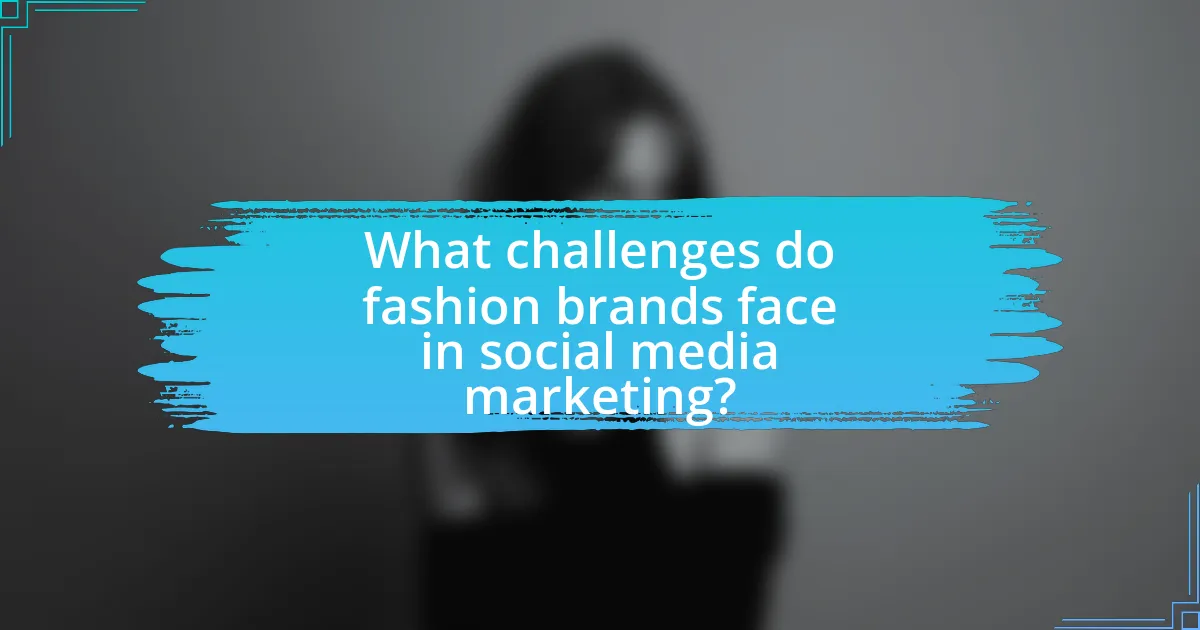
What challenges do fashion brands face in social media marketing?
Fashion brands face several challenges in social media marketing, including intense competition, rapidly changing trends, and the need for authentic engagement. The competitive landscape is fierce, with numerous brands vying for consumer attention, making it difficult to stand out. Additionally, fashion trends can shift quickly, requiring brands to adapt their strategies in real-time to remain relevant. Authentic engagement is crucial, as consumers increasingly seek genuine interactions and transparency from brands, which can be challenging to maintain across various platforms. According to a 2022 survey by Sprout Social, 64% of consumers want brands to connect with them on social media, highlighting the importance of effective engagement strategies.
How can brands navigate negative feedback on social media?
Brands can navigate negative feedback on social media by actively monitoring their online presence, responding promptly and empathetically, and addressing the concerns raised. Active monitoring allows brands to identify negative comments quickly, while prompt responses demonstrate that the brand values customer feedback. Empathetic communication can help de-escalate situations and show that the brand cares about its customers. According to a study by Sprout Social, 70% of consumers feel more positive about a brand when they receive a response to their feedback. This highlights the importance of engagement in managing negative perceptions effectively.
What strategies can be employed to manage brand reputation online?
To manage brand reputation online, companies should implement proactive monitoring, engage with customers, and respond promptly to feedback. Proactive monitoring involves using tools to track mentions of the brand across social media and review platforms, allowing for timely identification of potential issues. Engaging with customers through social media channels fosters a positive relationship and builds trust, as brands can showcase their values and respond to inquiries or concerns. Additionally, responding promptly to both positive and negative feedback demonstrates accountability and commitment to customer satisfaction, which can significantly enhance brand perception. Research indicates that 70% of consumers are more likely to recommend a brand that responds to their feedback, highlighting the importance of these strategies in maintaining a positive online reputation.
How do algorithm changes affect fashion marketing strategies?
Algorithm changes significantly impact fashion marketing strategies by altering how brands reach and engage their target audiences. For instance, when social media platforms modify their algorithms, they can prioritize certain types of content, which directly influences the visibility of fashion brands’ posts. A study by Hootsuite in 2021 indicated that organic reach on platforms like Instagram dropped by over 50% due to algorithm changes, compelling brands to adapt their strategies by investing more in paid advertising and influencer partnerships to maintain visibility. Consequently, fashion marketers must continuously analyze algorithm updates and adjust their content strategies to align with new trends in user engagement and platform preferences.
What metrics should fashion brands track to measure social media success?
Fashion brands should track engagement rate, follower growth, reach, impressions, and conversion rate to measure social media success. Engagement rate, calculated by the total interactions divided by total followers, indicates how well content resonates with the audience. Follower growth reflects brand popularity and audience expansion over time. Reach measures the total number of unique users who see posts, while impressions count the total views, providing insight into content visibility. Conversion rate tracks the percentage of users who take a desired action, such as making a purchase, demonstrating the effectiveness of social media campaigns in driving sales. These metrics collectively provide a comprehensive view of a brand’s social media performance and its impact on marketing strategies.
How can engagement rates inform marketing strategy adjustments?
Engagement rates can inform marketing strategy adjustments by providing insights into audience preferences and content effectiveness. High engagement rates indicate that the content resonates well with the target audience, suggesting that similar themes or formats should be continued or expanded. Conversely, low engagement rates signal a need for reevaluation of the content strategy, prompting marketers to explore different messaging, visuals, or platforms. For instance, a study by HubSpot found that posts with higher engagement rates lead to increased brand loyalty and customer retention, reinforcing the importance of adapting strategies based on these metrics.
What tools are available for analyzing social media performance in fashion?
Tools available for analyzing social media performance in fashion include Hootsuite, Sprout Social, and Google Analytics. Hootsuite allows users to track engagement metrics and audience demographics across multiple platforms, providing insights into brand performance. Sprout Social offers advanced analytics features, including sentiment analysis and competitor benchmarking, which help fashion brands understand their market position. Google Analytics can track referral traffic from social media to e-commerce sites, enabling brands to measure the effectiveness of their social media campaigns in driving sales. These tools are widely used in the fashion industry to optimize marketing strategies and enhance brand visibility.
What are the best practices for fashion brands to optimize their social media presence?
Fashion brands can optimize their social media presence by consistently creating high-quality, engaging content tailored to their target audience. This involves utilizing visually appealing images and videos that showcase products effectively, as studies indicate that posts with visuals receive 94% more views than text-only posts. Additionally, brands should leverage user-generated content to foster community engagement and authenticity, as 79% of consumers say user-generated content highly impacts their purchasing decisions.
Moreover, employing data analytics to track engagement metrics allows brands to refine their strategies based on audience preferences and behaviors. Regularly interacting with followers through comments and direct messages enhances brand loyalty, with 70% of consumers feeling more connected to brands that respond to their inquiries. Lastly, utilizing relevant hashtags and collaborating with influencers can significantly expand reach and visibility, as influencer marketing can yield an average return of $5.78 for every dollar spent.
How can brands create a cohesive brand identity across platforms?
Brands can create a cohesive brand identity across platforms by ensuring consistent messaging, visual elements, and tone of voice. Consistency in logos, color schemes, and typography across social media, websites, and advertising materials reinforces brand recognition. According to a study by Lucidpress, consistent branding can increase revenue by up to 23%. Additionally, aligning content strategies and audience engagement approaches across platforms fosters a unified brand experience, enhancing customer loyalty and trust.
What tips can help fashion brands stay relevant in a fast-paced social media landscape?
Fashion brands can stay relevant in a fast-paced social media landscape by consistently engaging with their audience through authentic content and timely responses. Engaging content, such as behind-the-scenes looks, user-generated content, and interactive posts, fosters community and loyalty. Timely responses to comments and messages enhance customer relationships and demonstrate attentiveness. Additionally, leveraging data analytics to understand audience preferences and trends allows brands to tailor their strategies effectively. According to a 2022 report by Sprout Social, brands that actively engage with their audience see a 20% increase in customer loyalty.
